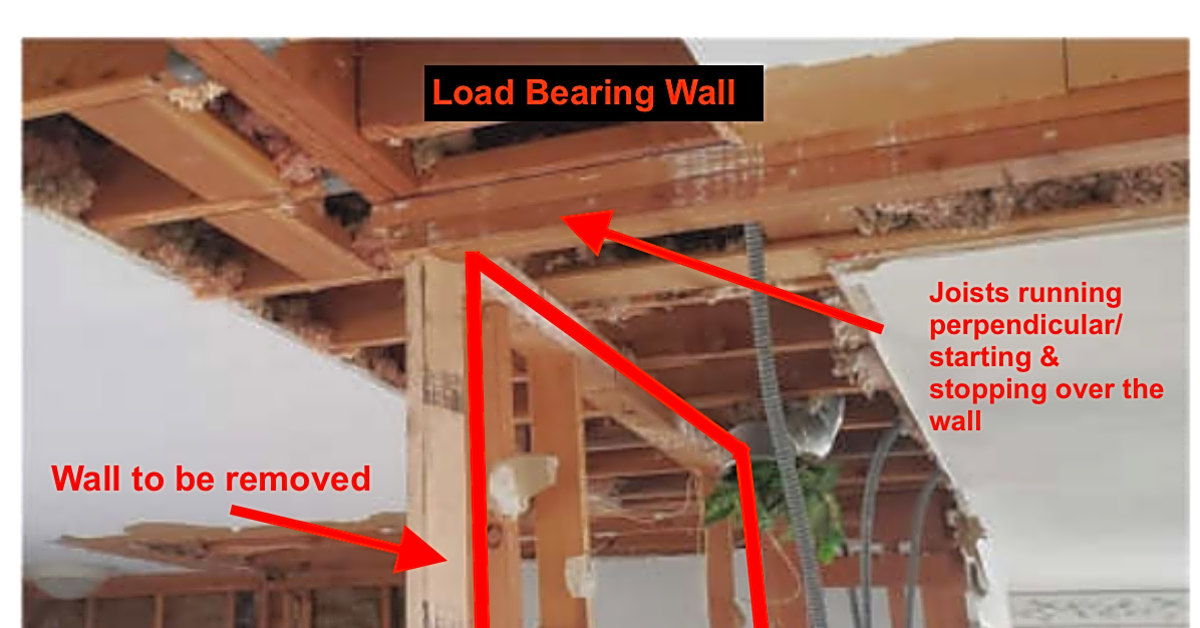
To determine whether a wall is load-bearing, Tom suggests going down into the basement or attic to see which direction the beams go. If the wall is parallel to the beams, it is likely that it is not load-bearing. If the wall is vertical, it is most likely load-bearing. The easiest way to identify load-bearing walls is to review the building’s blueprints.
Here are other ways to determine whether walls are load-bearing. One of the easiest ways to determine whether a wall is load-bearing is to look at the direction of the ceiling beams. If the ceiling beams run vertically (90 degrees) to the wall, the wall is load-bearing as it supports the weight of the ceiling beams. If the beams are parallel to the wall, the wall may be not sustainable.
As a system, load-bearing walls are typically 10 to 20 feet apart. They may be farther away, but that requires an advanced design. They can also be located closer together, for example, in the event that the walls form a corridor in the middle of a house. If you have an open, unfinished basement, go into the basement and look up.
The long boards in the ceiling, which are 12 to 16 inches apart, are beams. Note down which way they go (whether they start at the front of the house and go all the way to the back, or if they extend from side to side). Then go up and compare the orientation of the wall. If it’s in the opposite direction to the bars, it’s likely sustainable.
Another way to determine whether a wall is load-bearing is to compare its thickness with that of the other interior walls. In general, partitions (a term that describes non-load-bearing walls) are built with 2×4 supports. These are cheaper but sturdy enough for non-load-bearing walls. With ½ inch drywall on both sides, these walls are approximately 4.5 inches thick. Depending on the load, the load-bearing walls are either 2 × 6 or even 2 × 8 large, these walls with drywall will be 6½ inches and 8¼ inches thick, respectively. If your ultimate goal is to remove a load-bearing wall, be aware that this project is almost never a home improvement project. To remove the existing wall, temporary walls must be installed, work carefully between these walls and replace the load-bearing wall with an appropriately sized head made from the right material. If you would like to carry out this project yourself, get advice from a structural engineer or architect.
However, anyone who is unsure of even 1 percent of their skills and experience in completing the project should call a contractor. If there is any type of support system under the wall, the wall is likely to be load-bearing and load-bearing. These are drawings provided by the architect or designer that show where each object in the house should be located, including the location of the load-bearing walls. A wall that runs down the middle of a house can be a load-bearing wall that helps support the weight of the roof.
If you demolish a load-bearing wall without proper preparation, it could mean the end of your renovation budget. From foundation to roof, piles of load-bearing walls support the weight of the frame, roofs, drywall, furniture, flooring, people, equipment, and other objects. To remove a load-bearing wall, it must be replaced by a base body that consists of either a sandwich of wood, adhesive and plywood, engineered wood or laminated wood or steel. Most walls that run perpendicular to the beams above and below them are load-bearing unless they were added after construction.
If the wall is a partial wall with a beam running along it, the wall could be a load-bearing wall. Some partial walls may have support beams. So don’t assume that partial walls are never load-bearing walls. The term “load-bearing wall” is pretty descriptive, as it supports the weight of the overlying bullet and transfers it downwards into the framework below. If you’re still unsure how to tell if a wall is load-bearing, it might be time to stop trying and call in an expert.
One of the best ways to determine whether a wall is load-bearing is to review your home’s blueprints.

Recent Comments